Key Takeaways
1. Math is the invisible engine powering modern daily life.
In short, services that we use every day are only possible because they are using math in the background.
Behind the scenes. Many technologies we rely on daily, from navigation apps to streaming service recommendations and search engines, function because of complex mathematical calculations happening invisibly. These systems process vast amounts of data and perform rapid computations that would be impossible for humans.
Examples abound. Consider Google Maps, which views the world as a network of intersections and roads, calculating optimal routes based on travel times and traffic data. Netflix uses mathematical algorithms to analyze viewing habits and recommend content tailored to individual tastes by identifying similarities between users and programs. Google Search ranks web pages by mathematically determining their importance within the vast network of the internet.
Simplifying complexity. While the underlying math might seem complex, its purpose is often to simplify practical problems for the user. Computers can perform calculations far faster than humans, making services like real-time traffic updates or personalized recommendations feasible, even if the computer's method isn't always intuitively "smarter" than human reasoning.
2. The abstract nature of math paradoxically makes it profoundly useful for understanding reality.
That is why it is so fascinating that mathematics actually works.
A philosophical puzzle. Philosophers have long debated the nature of mathematics – is it a discovery of pre-existing abstract truths (Platonism) or a human invention (Nominalism)? Regardless of the answer, the fact that abstract mathematical concepts, seemingly detached from the physical world, can accurately describe and predict real-world phenomena remains a profound mystery.
Predictive power. History is filled with instances where mathematical elegance or unexpected results led to scientific breakthroughs.
- Newton's theory of gravity, initially met with skepticism for its "action at a distance," was accepted due to its impressive mathematical predictions.
- Copernicus's heliocentric model, though initially less accurate, was preferred for its mathematical simplicity and eventually proved more fruitful.
- Dirac's mathematical model predicted the existence of the positron, an anti-matter particle, before it was experimentally observed.
- Fresnel's use of complex numbers in optics predicted phenomena like total internal reflection.
Beyond coincidence. These examples suggest that the alignment between mathematical structures and physical reality is more than mere chance. Scientists often favor mathematical models that are "neater" or more compact, and these often turn out to be the ones that best describe the world, hinting at a deep, albeit mysterious, connection.
3. Humans possess innate numerical and geometric abilities, but formal math provides precision and scale.
Each of us is born with a wide range of mathematical skills with which we can survive even without math lessons.
Born with a sense. Research shows that humans, even babies, have an innate ability to perceive and distinguish quantities, particularly small ones (up to three or four). We can also estimate larger quantities, though less precisely, and recognize basic geometric shapes and spatial relationships. This allows cultures without formal math systems, like the Pirahã or Loboda, to manage basic tasks like trading, building, and navigation through estimation and comparison.
Limitations of intuition. While this inherent "number sense" is useful for small-scale, immediate needs, it lacks the precision and scalability required for complex tasks. Estimating the length of a bridge or the number of yams in a large basket is sufficient for simple bartering or construction, but it cannot support large-scale planning, standardized measurement, or complex accounting.
Math adds exactness. Formal mathematics provides the tools for exact counting, precise measurement, and rigorous calculation. It allows us to move beyond estimation to know exactly how many items are present, the precise dimensions of a structure, or the exact value of a transaction. This precision is essential for organizing large populations, managing resources efficiently, and undertaking ambitious engineering projects.
4. Mathematics emerged historically as a necessary tool for managing complex societies and economies.
Math makes practical problems simpler and the world around us more manageable.
From tokens to numbers. The earliest evidence of formal mathematics, dating back thousands of years in Mesopotamia and Egypt, is found in administrative records. As cities grew and societies became more complex, simple bartering and estimation were no longer sufficient for tasks like collecting taxes, managing food reserves, or coordinating labor for large projects.
Solving administrative problems. The need for precise accounting led to the development of number systems and written records.
- Mesopotamians used clay tokens and later cuneiform script for bookkeeping, managing labor, and land division.
- Egyptians used hieratic script for administrative purposes, including calculating taxes based on Nile floods and managing complex payrolls paid in goods like bread and beer.
- Both cultures developed methods for working with fractions and geometry for practical applications like surveying and construction (e.g., calculating pyramid angles).
Beyond practicality. While initially driven by practical needs, mathematics in these cultures, and later in Greece and China, also developed beyond immediate utility. Solving complex, sometimes nonsensical, word problems became a way to train scribes and demonstrate intellectual prowess, showing that the pursuit of mathematical knowledge could also be valued for its own sake, even if its origins were rooted in necessity.
5. Calculus provides the essential framework for understanding and quantifying change.
Integrals and differentials have changed the world.
Measuring the dynamic. Before calculus, mathematics was primarily suited for static quantities. Isaac Newton and Gottfried Wilhelm Leibniz, working independently in the 17th century, developed calculus (differentiation and integration) to precisely measure things that are constantly changing, like speed, acceleration, or the rate of growth. This required embracing the concept of infinity, which earlier mathematicians like the Greeks had avoided.
Applications in motion and flow. Differentiation allows us to calculate instantaneous rates of change (like the speed of a car at a specific moment), while integration allows us to sum up continuous changes over time or space (like the total distance traveled or the volume under a curve).
- Cruise control and self-driving cars use calculus to constantly adjust speed and direction.
- Weather forecasting relies heavily on calculus to model the continuous changes in atmospheric conditions.
- Engineering uses calculus to calculate how materials bend under stress, essential for designing large structures like bridges and skyscrapers.
Ubiquitous influence. Calculus is fundamental to understanding physics, economics, and countless engineering applications. It enables the design and control of systems where variables are in constant flux, from regulating temperature with a thermostat to optimizing rocket landings. Its development marked a profound shift in mathematical capability, making modern technology and scientific understanding possible.
6. Statistics allows us to grapple with uncertainty and analyze large datasets, despite potential for misuse.
Statistics can mislead us, but they can also be very useful.
Quantifying the unknown. Probability theory, the foundation of statistics, began with seemingly trivial questions about gambling games posed by figures like the Chevalier de Méré to mathematicians like Pascal and Fermat. This led to methods for calculating the likelihood of outcomes, even when not all possibilities are known in advance, as explored by Jacob Bernoulli and later refined by Thomas Bayes.
Making sense of data. Statistics provides tools to analyze large collections of data, estimate unknown quantities, and quantify the reliability of those estimates.
- Tobias Mayer used statistical methods to improve predictions of the Moon's position, aiding navigation.
- Gauss and Laplace developed methods like least squares to find the "best fit" line through multiple data points, allowing for more accurate estimates from noisy data.
- John Snow used statistical analysis of death locations to identify the source of a cholera outbreak, demonstrating the power of data in public health.
The double-edged sword. While invaluable for scientific research, medical testing (like interpreting cancer screening results), and understanding population trends (like election polls or income averages), statistics can easily be manipulated or misinterpreted. Averages can hide crucial details, correlations can be mistaken for causation (like Nicolas Cage films and drownings), and selective presentation of data can create a distorted picture of reality, making critical evaluation essential.
7. Graph theory, born from puzzles, is fundamental to understanding and navigating networks like the internet.
Euler initiated this field of math on the basis of a puzzle: the seven bridges of Königsberg.
Mapping connections. Graph theory began with Leonhard Euler's abstract representation of the Königsberg bridge puzzle as a network of points (landmasses) connected by lines (bridges). This simple idea of representing relationships between entities has become a powerful tool for studying complex networks of all kinds.
Navigating complexity. Graphs are used to model systems where entities are interconnected, and algorithms are developed to analyze these structures.
- Google Maps represents road networks as graphs to calculate optimal routes, using algorithms like A* and "highway hierarchies" to efficiently navigate vast networks.
- Google Search views the internet as a graph of web pages linked by hyperlinks to determine the importance and relevance of information.
- Netflix uses graphs to map relationships between users and content to provide personalized recommendations.
Powering AI and social networks. Graph theory is also fundamental to the structure and function of social networks like Facebook, mapping friendships and connections. Furthermore, it forms the basis of neural networks, the core architecture behind many modern artificial intelligence applications, enabling tasks like image recognition, language processing, and targeted advertising by modeling interconnected "neurons" that process and transform data.
8. Understanding core mathematical ideas is crucial for navigating and critically assessing the modern world.
Mathematics, and certainly the more difficult parts of it, gives us a greater insight into the world around us.
Beyond calculation. While most people won't need to perform complex calculations like integrals or graph algorithms in their daily lives, understanding the fundamental ideas behind these mathematical concepts is increasingly important. Math is not just a tool for scientists and engineers; it shapes the information we receive, the technologies we use, and the policies that govern us.
Informed citizenship. A basic grasp of statistics, for instance, is essential for critically evaluating news reports, polls, and research findings that use averages, percentages, and correlations. Understanding how data can be summarized or potentially manipulated empowers individuals to form more informed opinions on social and political issues.
Navigating the digital age. Knowledge of graph theory provides insight into how platforms like Google and Facebook filter and present information, influencing our perspectives and potentially creating "filter bubbles." Understanding the basics of neural networks helps demystify artificial intelligence and its growing impact on areas from personalized advertising to surveillance and decision-making, allowing for more informed discussions about its ethical implications.
Empowerment through understanding. While the details can be left to computers, understanding the core concepts of calculus, statistics, and graph theory provides a vital lens through which to view and understand the complex, data-driven world we inhabit. It empowers individuals to be more critical consumers of information and more engaged participants in discussions about the technologies and systems that shape their lives.
Last updated:
Review Summary
Pluses and Minuses receives mixed reviews, with ratings ranging from 1 to 5 stars. Readers appreciate the book's accessible explanation of math's real-world applications and historical context. Some find it engaging and eye-opening, while others criticize its vagueness and simplistic approach. The book covers various mathematical concepts, including calculus, statistics, and graph theory. Reviewers note that it may be more suitable for younger audiences or those with limited mathematical background. Some readers wish for more in-depth explanations and concrete examples, while others praise the author's passion for making math relatable.
Similar Books

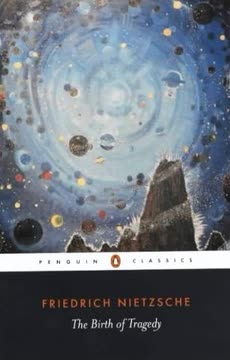
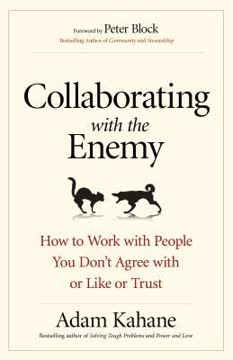
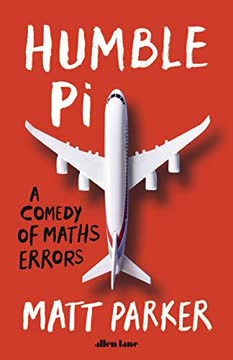
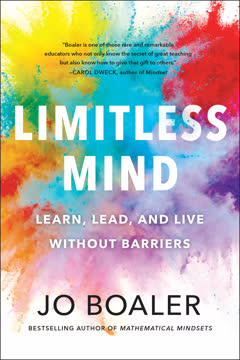
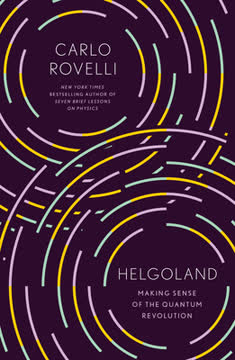
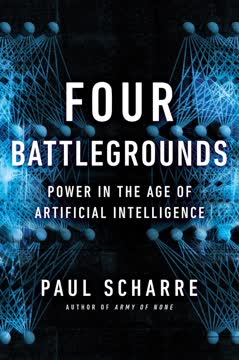
Download PDF
Download EPUB
.epub digital book format is ideal for reading ebooks on phones, tablets, and e-readers.




